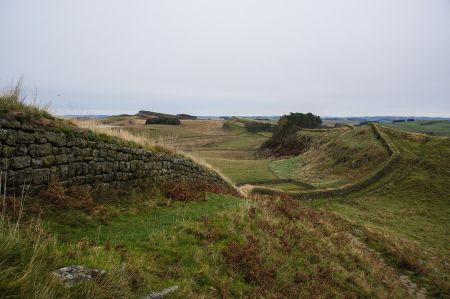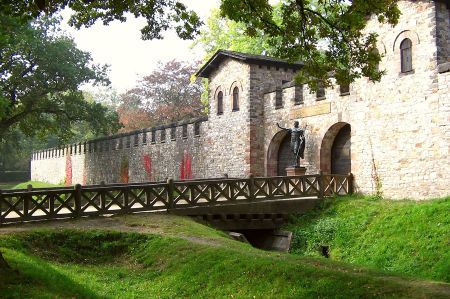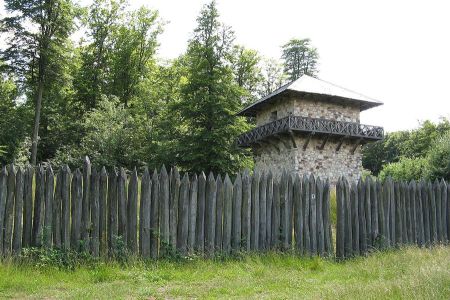The Euphrates-Limes, Roman border security in the east
- Written by Portal Editor
When the term "Limes" is mentioned, almost everyone immediately thinks of the Roman defense system that ran from the Rhine to the Danube and represented the border between the Roman Empire and the "Free Germania", perhaps also of Hadrian's Wall, which separated England and Scotland.
We are less aware that a long border line in the east of the empire had to be defended against the Parthians and Sassanids, a border that was perhaps even more important than the Germanic Limes. And yet: There was an extensive and strongly secured limes (border) from the Trabzon (Trapezunt) on the Black Sea over the Pontic Taurus (Zigana Pass) to the upper reaches of the Euphrates, then largely using the course of the river down to the Syrian lowlands under inclusion the important oasis city and residence Palmyra and across the Syrian desert until it finally reached the Red Sea at Aqaba.

However, one should not imagine this Limes as a closed border fortification like the Limes in Germany, because the Euphrates itself was to be regarded as a border in parts due to the conspicuous topography. On the other hand, the mountainous terrain prevented a closed demarcation.
The Euphrates-Limes, the Roman border against the Parthians and Sassanids
With its fords and bridges, the central reaches of the Euphrates had always played the role of a geographically particularly favorable transition between east and west. The trade routes, on which of course also the cultural exchange took place, ran here far beyond antiquity.
With the entry of the Romans into the history of Asia Minor, especially through the inheritance of the Pergamene Empire after the death of Attalus ’III. in 133 BC. and the further expansion to the east, the Euphrates gained great importance as a frontier, especially after Pompey established the province of Syria.
The relocation of the legions under Augustus and Tiberius

The demarcation of the border on the Euphrates lost its strategic importance. With the strengthening of the Persian Sassanid Empire in
In the 2nd and 3rd centuries AD, however, the Euphrates line regained importance as a line of retreat.
At the end of the 3rd century, the Sassanids ousted the Parthian great power and pressed the Roman eastern borders in several offensives. For example, the Romans lost Duro Europos and Zeugma to the Persian invaders in 256 AD, who completely destroyed Zeugma. The climax of the conflict marked the capture of Emperor Valerian by the Persian King Shapur I in AD 260. The rise of the desert city of Palmyra also fell during this period. (see below)
Old Roman road between Samosata and Zeugma
The course of the old Roman road between Samosata and Zeugma and over to Melitene, today's Malatya, is mainly traceable through the bridges and road sections that have been preserved or can only be guessed at. The road from Samosata to the south was built very close to the banks of the Euphrates for logistical reasons, so that, for example, a tunnel had to be cut through the rock on the steep slope in front of Zeugma, which can still be seen today. Ancient milestones date the start of construction to the time before the Flavian emperors, but the road network was significantly expanded under the Severans in the 2nd century AD.
In addition to the military-strategic importance of the Euphrates line, this region, as a transit country between the mountainous landscapes of Armenia to the Caucasus in the north and the desert regions down to Arabia in the south, was predestined for a lively exchange of goods and cultural exchange between east and west.
In the context of the Roman expansion in Asia Minor, the Euphrates border was of particular importance in another respect. To the west of this line, the territorial reorganization under Pompey and Augustus began a great upswing in the Hellenistic cities, which from the Roman point of view was an important factor of order. As a result of the systematic Romanization, Asia Minor becomes a unified cultural structure. The development of the Greek cities east of the Euphrates, however, is quite different. If the Parthians still respected and respected Greek culture, the rise of the Sassanids, a Persian dynasty whose cultural ideas and inheritance were shaped quite differently, began a continuous decline of Greek-Hellenistic culture. The cities lost their state-supporting function, instead a strictly centralized feudal structure characterized the social and political structure of the new great power.
Zeugma (today: Belkis) was obviously the most important crossing
Zeugma on the Euphrates (today: Belkis) was obviously the most important crossing over the river in the Roman Empire. Here and near Samosata in the north were the central legionary camps from which the marches against the Parthians and Sassanids were prepared. Thus, under the protection of the Roman military, trade was able to develop geographically broadly. Caravan centers emerged behind the border fortifications, for example in Antioch on the Orontes, in Palmyra, in Damascus and Gerasa. The central north-south axis ran through the Nabataean capital Petra to southern Arabia.
The rise of the Palmyra desert oasis in particular marks a milestone in the economic and political development under the protection of the Syrian Limes. Under Diocletian, a Roman legion was stationed in Palmyra after the oasis had already received the status of a “civitas libera” under the emperor Hadrian, all signs that Palmyra had become the center of profitable oriental trade in Roman times.
“For centuries, the area of the central Euphrates has been of eminent military and economic importance for the Orient and Occident. Yes, it can be said that this region with its numerous river crossings was not only the most accessible but also the only real zone of contact between the Roman-Byzantine and the Parthian-Sassanid world. "
(J. Wagner, Die Römer an Euphrat und Tigris, from: Antike Welt, special edition 1985, p. 14)
Excavations were carried out with the construction of the Birecik Dam
Please read as well:
